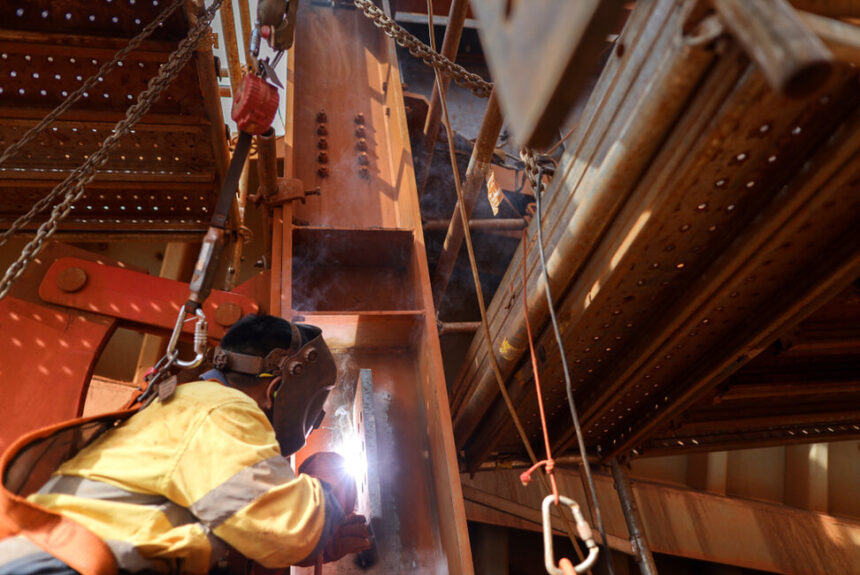When workers work at heights, their safety is critical. Falling from a height can cause significant injury or death. This is why lifeline fall protection systems are so vital. Lifeline systems function as a safety net, preventing workers from falling or lowering the harm if they do. These systems are commonly utilized in construction, maintenance, and other high-risk environments when workers must operate on rooftops, tall buildings, or other elevated surfaces.
Further, various manufacturers in this field create them in various shapes. Their primary function is to safeguard workers from falls. They allow workers to move around securely while being attached to a secure place, such as a solid anchor. If a worker slips or loses balance, the Lifeline Fall Protection system grabs them and saves them from plummeting to the floor. So, the usage of lifeline systems is increasing due to a greater emphasis on safety. Employers and employees want to ensure that everyone is safe while working. Lifeline systems provide a simple yet efficient method of protecting individuals from falling. It makes them the first line of defense against falls.
The Mechanics of Lifeline Fall Protection
You might wonder how they save lives. Don’t worry; we will explain it to you. Lifeline fall protection uses a solid rope to connect workers to secure anchor points. This line is often built of solid materials such as steel or robust synthetic fibers, allowing it to withstand much weight. The lifeline is coupled to a harness worn by the worker. It helps to distribute the impact of a fall over the body, lowering the risk of harm. There are two major types of lifeline systems. These are horizontal and vertical. Horizontal lifeline systems are used when workers travel sideways, such as while working near the roof’s edge. Vertical lifeline systems are used when workers have to climb up and down ladders or scaffolding. This is how it works. Assume a worker is going around a roof while linked to a horizontal lifeline. The lifeline is tied to an anchor at either end, and the worker’s harness is hooked to the line. If the worker slips, the lifeline will catch them and prevent them from going over the roof. The same concept applies to vertical lifeline systems. Still, instead of moving sideways, the worker moves up or down as if on a ladder.
Further, the lifeline catches the worker and slows their fall. This is vital since a quick stop might result in harm. Lifeline fall protection systems often contain shock absorbers. It will progressively decrease the descent. This lessens the worker’s body strain, making the system safer to operate. Companies that use lifeline systems by US Fall Protection can safeguard their employees from serious falls. These systems are an essential component of any workplace where people operate at heights, guaranteeing that if a person falls, they are protected from damage.
Anchoring Safety in Dynamic Work Environments
One of the advantages of lifeline systems is their flexibility. They may be employed in various situations, including building sites, warehouses, and industrial plants. Because of their versatility, lifeline systems are ideal for workers who move about a lot while on the job. There are two types: active and Passive Fall Protection Systems. Both are beneficial in their own way.
Further, lifeline fall protection is highly beneficial in dynamic work contexts where the layout and circumstances constantly change. For example, on a building site, workers may need to go from one area to another and work at various heights during the day. Lifeline systems allow individuals to roam freely while tethered to an anchor point. Another advantage of lifeline systems is that they may be employed in temporary and permanent configurations. In other circumstances, workers only require fall protection for a limited time, such as during maintenance work. Temporary lifeline systems can be installed quickly and withdrawn after completing the project. In some circumstances, permanent lifeline systems are constructed for long-term usage, like atop a building’s roof, where workers require regular access for inspections and maintenance.
Further, anchoring is one of the most critical components of a system. The anchor must be robust enough to support the weight of a falling worker. This anchor can be fastened to a building, a beam, or a sturdy structure. The type of anchor utilized depends on the work environment and the project at hand.
Designing Fall Protection for Specific Workspaces
Workers’ safety needs and workplaces differ. This is where personalized lifeline solutions come into play. Lifeline systems can be adapted to meet the specific demands of every workplace, ensuring that workers are adequately protected regardless of their surroundings. Further, some workstations feature unconventional layouts, such as tiny spaces, curved surfaces, or complicated gear. In certain instances, more than typical lifeline fall protection systems are required. Customized solutions enable companies to develop a fall protection system for their unique workplace issues. This implies that workers may remain safe even in difficult-to-reach or uncomfortable areas. For example, suppose workers must reach equipment on top of a tall, narrow tower. In that case, a specialized vertical lifeline system can be constructed to ensure their safety while ascending.
Similarly, suppose workers must navigate a big roof with varying heights and levels. In that case, a horizontal lifeline system can be created to ensure their safety as they go from one place to another. A lifeline system’s design is influenced by the sort of work being done and the workplace arrangement. Specific responsibilities require workers to handle heavy tools or move large pieces of equipment. A custom lifeline system can be changed to allow workers to move freely while maintaining their safety links. So, we make sure that you are safe while using our gadgets and services.







